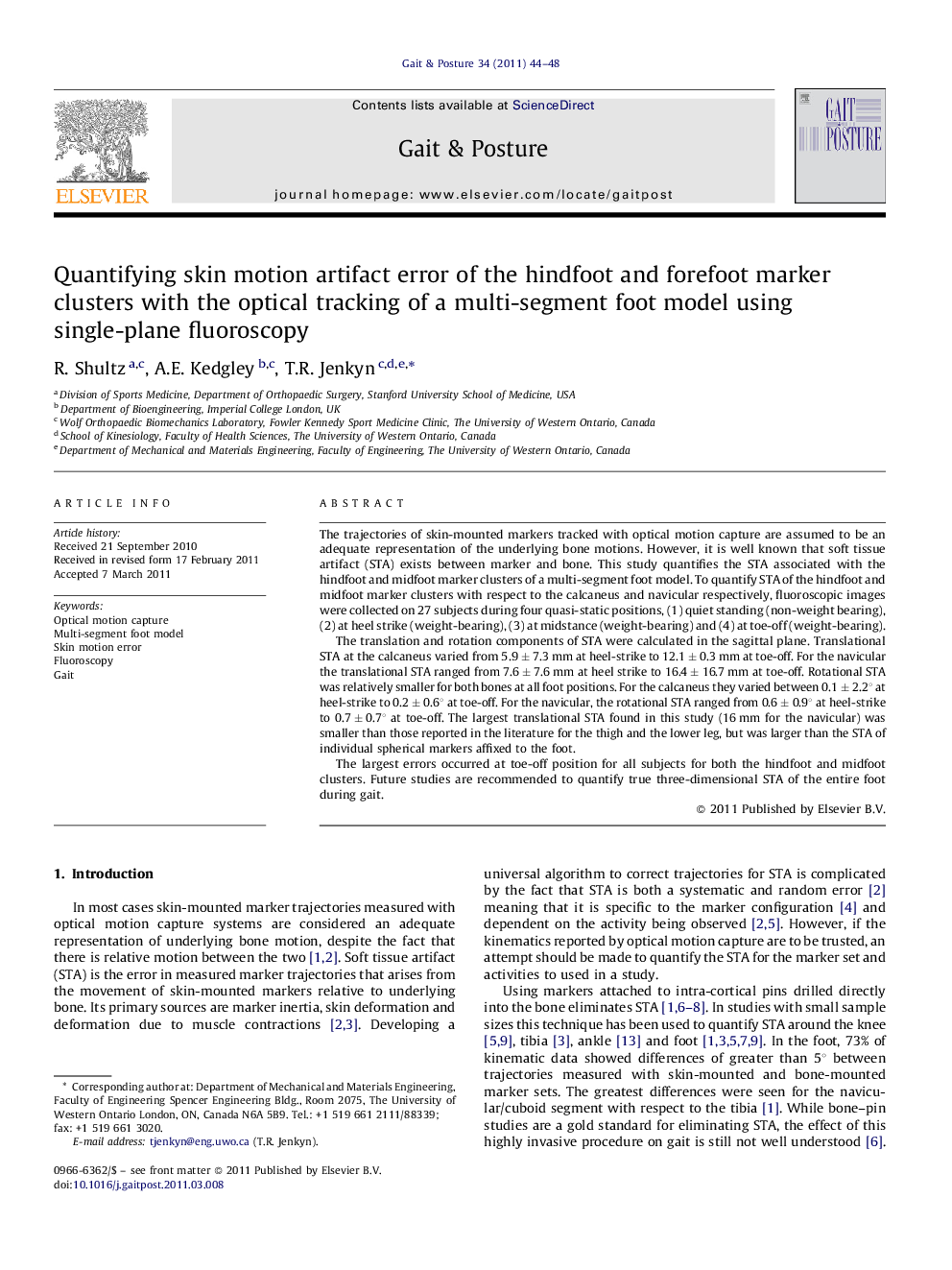| Article ID | Journal | Published Year | Pages | File Type |
|---|---|---|---|---|
| 6208287 | Gait & Posture | 2011 | 5 Pages |
The trajectories of skin-mounted markers tracked with optical motion capture are assumed to be an adequate representation of the underlying bone motions. However, it is well known that soft tissue artifact (STA) exists between marker and bone. This study quantifies the STA associated with the hindfoot and midfoot marker clusters of a multi-segment foot model. To quantify STA of the hindfoot and midfoot marker clusters with respect to the calcaneus and navicular respectively, fluoroscopic images were collected on 27 subjects during four quasi-static positions, (1) quiet standing (non-weight bearing), (2) at heel strike (weight-bearing), (3) at midstance (weight-bearing) and (4) at toe-off (weight-bearing).The translation and rotation components of STA were calculated in the sagittal plane. Translational STA at the calcaneus varied from 5.9 ± 7.3 mm at heel-strike to 12.1 ± 0.3 mm at toe-off. For the navicular the translational STA ranged from 7.6 ± 7.6 mm at heel strike to 16.4 ± 16.7 mm at toe-off. Rotational STA was relatively smaller for both bones at all foot positions. For the calcaneus they varied between 0.1 ± 2.2° at heel-strike to 0.2 ± 0.6° at toe-off. For the navicular, the rotational STA ranged from 0.6 ± 0.9° at heel-strike to 0.7 ± 0.7° at toe-off. The largest translational STA found in this study (16 mm for the navicular) was smaller than those reported in the literature for the thigh and the lower leg, but was larger than the STA of individual spherical markers affixed to the foot.The largest errors occurred at toe-off position for all subjects for both the hindfoot and midfoot clusters. Future studies are recommended to quantify true three-dimensional STA of the entire foot during gait.
